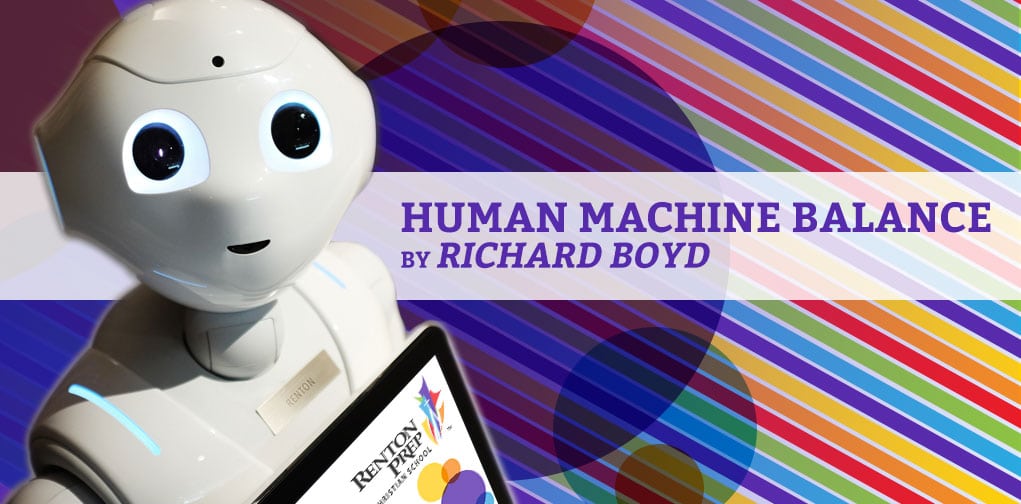
The biggest issue for the 21st century, for individuals and organizations alike, is determining how to achieve the correct balance between humans and automation to optimize outcomes. This raises a number of questions for teaching methods and practice. We will discuss how we can teach the next generation to achieve human machine balance and comfortable fluency while we also prepare our teachers to do the same.

Increasingly powerful compute devices that use less power and interface with novel display devices like wearable contact lenses (from companies like Innovega) or pico projectors (Microvision), immersive portable displays like (Wearality) and augmented reality eyeglasses (Microsoft hololens, Magic Leap) will provide ubiquitous and robust access to augmented reality and fully immersive synthetic environments for training, information retrieval, entertainment, and communication.
Moore’s Law is also driving the proliferation of cheap and powerful sensors that can capture and re-create static or real-time motion environments in the synthetic world with a high degree of fidelity. These sensors combine a variety of methods such as optical tracking, infrared and structural light, and time of flight depth sensors that can create an increasingly accurate model of the real world. They are also now being used to allow humans to interact with compute devices via gesture, as seen in Microsoft’s $150 Kinect system. We are beginning to cheaply “print” sensors.
Increasing bandwidth availability will mean that more of the rendering and calculation required for high fidelity synthetic environments will be done on powerful super computers. Then simply streamed onto small devices that require very little power or compute capability. Powerful algorithms that extend human capability via expert systems for decision support and artificial intelligence will provide intelligence amplifications to individuals and teams. Uninterrupted access will become a vital resource for information age humans.
At Tedmed in 2009, Dr. Rick Satava of the University of Washington presented a thesis that the scientific community should add an additional step to the scientific method: the Sim step. In his argument he stated that in this time of ubiquitous and powerful computing resources we should be running experiments in simulators. “Would you like to try your experiment 8 times or ten to the eighth times?” Simulation will grow as a means for humans to make sense of the world, make better decisions and learn about the past, present, and future. Any human endeavor that includes at least two of the attributes on the right could benefit tremendously from the “learn by doing”, “safe practice environment” virtues of simulations learning. Humans who are fluent with simulation will prevail over those who are not using it.
Artificial intelligence (AI), whether in the form of finite state machines or inference engines or neural nets, will become an increasingly powerful asset for humans who need to make critical and timely decisions in complex environments where there is a high cost of failure. As the semantic web is born and AI of various formats learn to gather their own information from the Internet at machine speeds, they will appear to develop what James Martin called an “alien intelligence” that moves at speeds beyond our comprehension and that can have ready and real-time advice for humans in the loop (Martin, 2000). This is the Age of Siri and Watson and Tanjo!
Our automation, in the form of the AI engines above, coupled with the semantic web parsed at machine speeds, and combined with our mobile high resolution wearable computer interfaces to each other and information will augment our understanding of every situation and person we encounter. Those who avail themselves of this augmentation will appear super human to those without that capability, and human performance will reach new heights. Organizations and individuals who do not embrace augmentation will find a performance chasm yawning between them and those who do augment.
It is fast becoming a human right to be able to access knowledge fluidly. Social media has swept the planet and has brushed away the barriers and friction that stifled communication and commerce of ideas like never before in human history. This harnessing of network effects to enable the free flow of ideas, attitudes, opinions and cultures will be a permanent part of the 21st century information age. This Massively Parallel Contribution System will enable the symbiosis of man and machine that directs human evolution.
Martin, J. (2000). After the Internet: Alien Intelligence (First Edition edition). Washington, D.C: Regnery Publishing. http://a.co/56xoozL
Simon, H. (2009). The Economist. https://www.economist.com/node/13350892
Richard Boyd
Twitter: @Metaversial